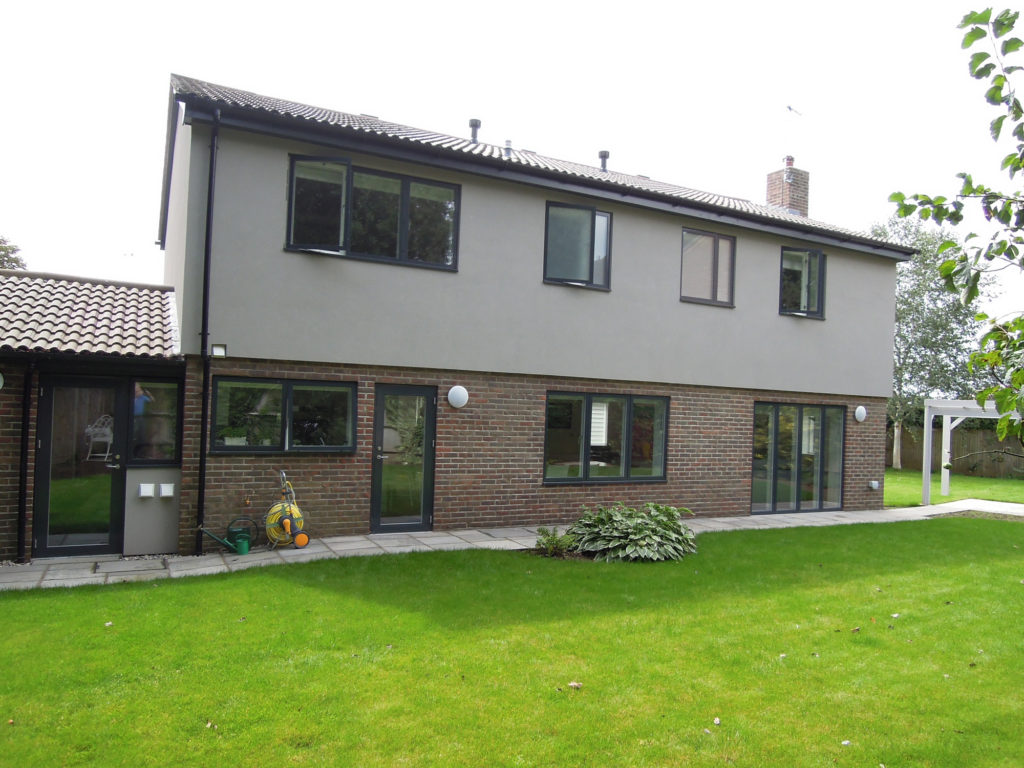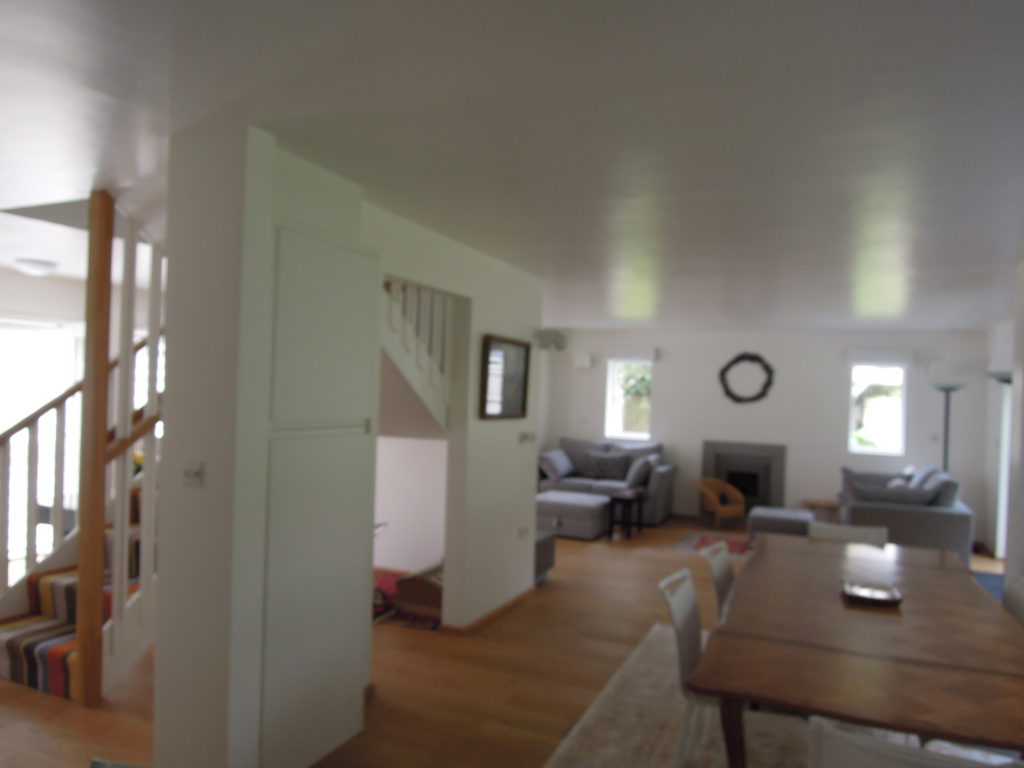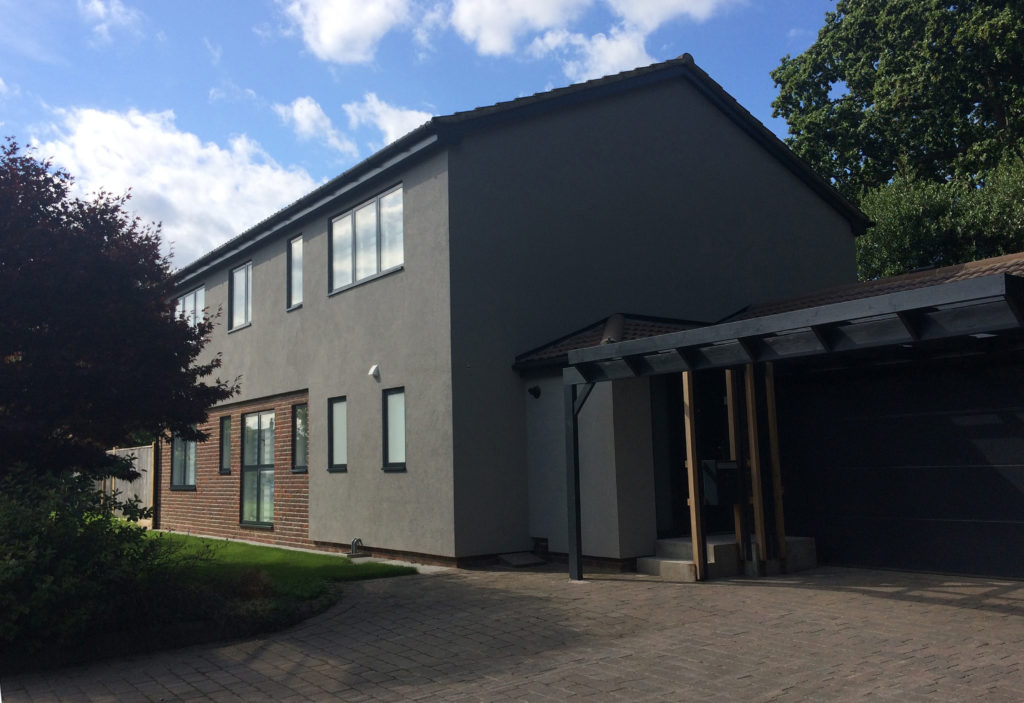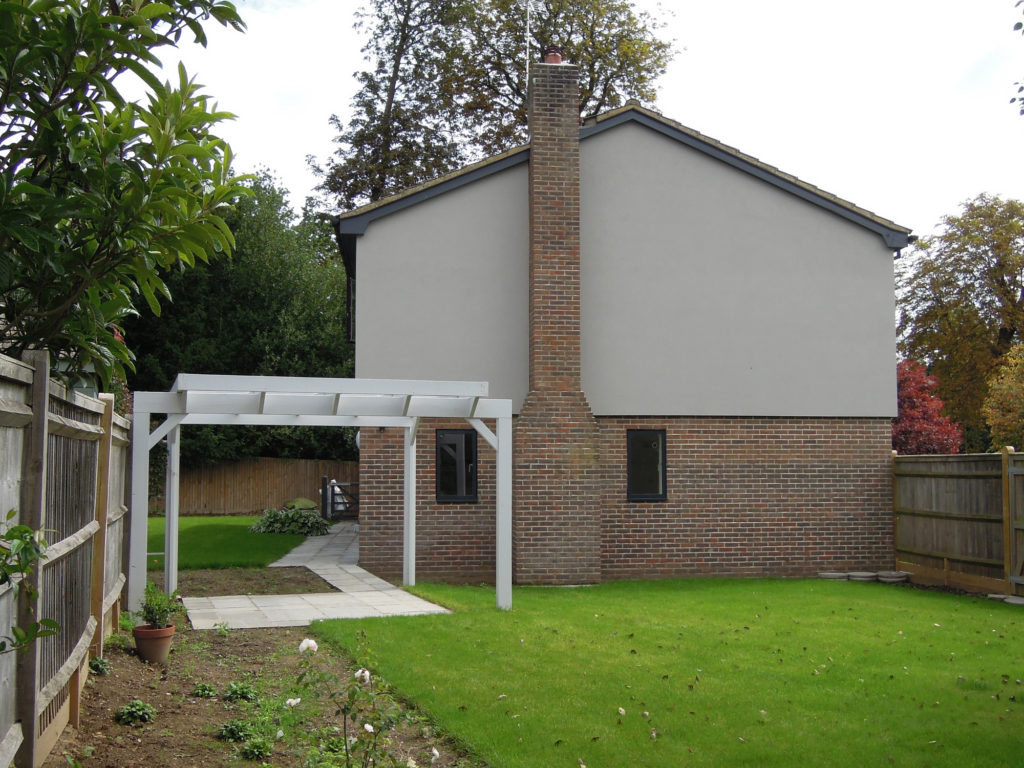Low energy retrofit of a detached 1980s house in Sussex, South of England

The original layout had individual single aspect rooms on the ground floor, which has now been replaced with an open plan lit from two directions with cross ventilation. The ground floor has been insulated internally whilst the first floor is insulated externally with render finish. The render stops just above the ground floor windows so the structure of the upper floor is clad to overcome any cold bridging, increase air tightness at this critical junction and thereby reduce infiltration.
The internal wall insulation is continuous with, and taped to, the 80mm of insulation within the floor. Underfloor heating makes for comfortable radiant conditions. The stub projections of the existing walls at the ground floor have been insulated with insulation bonded to plasterboard to eliminate any cold bridges and condensation risk.

The original window openings have been retained because having made what was the front door into a large window, the largest area of glazing now faces south. Only two windows face west and there are none with an easterly orientation. The south and west facing replacement windows are double glazed windows to optimise solar heat gain whereas those to the north are triple-glazed, all with low-e coating to the glass and argon gas fill.
A whole house system of ventilation has been used with trickle vents within the windows to the habitable rooms and passive stacks expelling above the roof through humidity controlled grilles at the bathroom ceilings. The large window, at what used to be the front door, has been made into a sunspace with a stone heat sink at the floor for passive solar heating; the ventilation path to the passive stacks is via the open stairwell.

Pipes have been incorporated within the utility corridor floor so that in the future the boiler can be replaced with an air-source heat pump. The large south-facing roof is suitable for later PV installation, particularly if progress in battery development enables a power-pack to be installed in the garage as fuel supply to a future electric car.
Lawn has been planted on three sides of the house which helps cool the local climate, and incoming ventilation air, on hot summer days. Pergolas have been built from timber on both sides of the house and will be planted with types attractive to butterflies and bees, and help promote species diversity. Because the project has retrofitted the original house, without any extensions, the process has mainly been one of subtraction; a minimum quantity of new materials has been required, a high proportion of the components removed during demolitions have been re-used.



